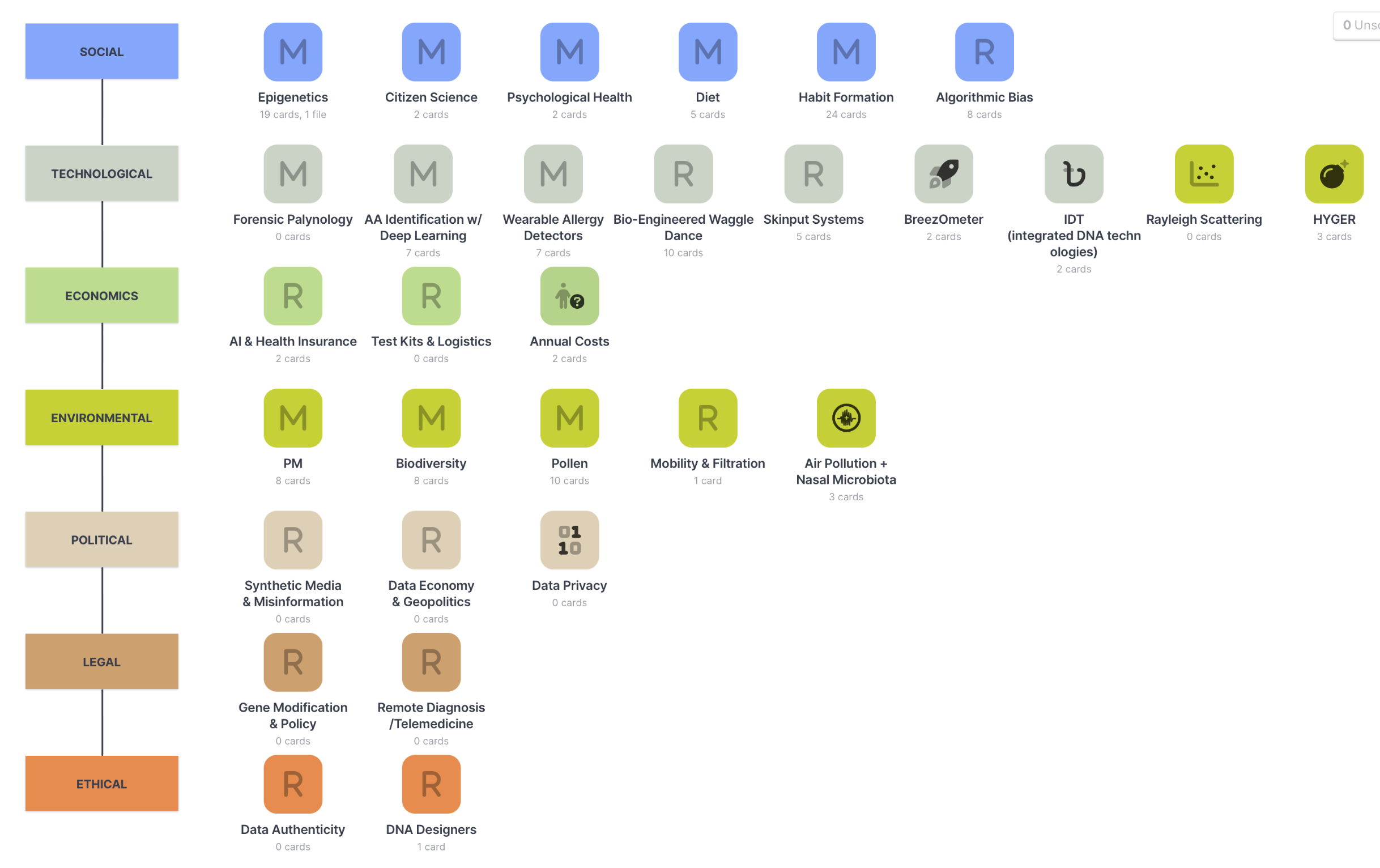
Organizing our research and ideas into categories was a crucial first step in conducting our idea audit, as it enabled us to analyze the information more effectively. We began by conducting thorough research on our topic and gathering all the relevant information. From there, we utilized the STEEPLE framework to sort our research into distinct categories or “bins.”
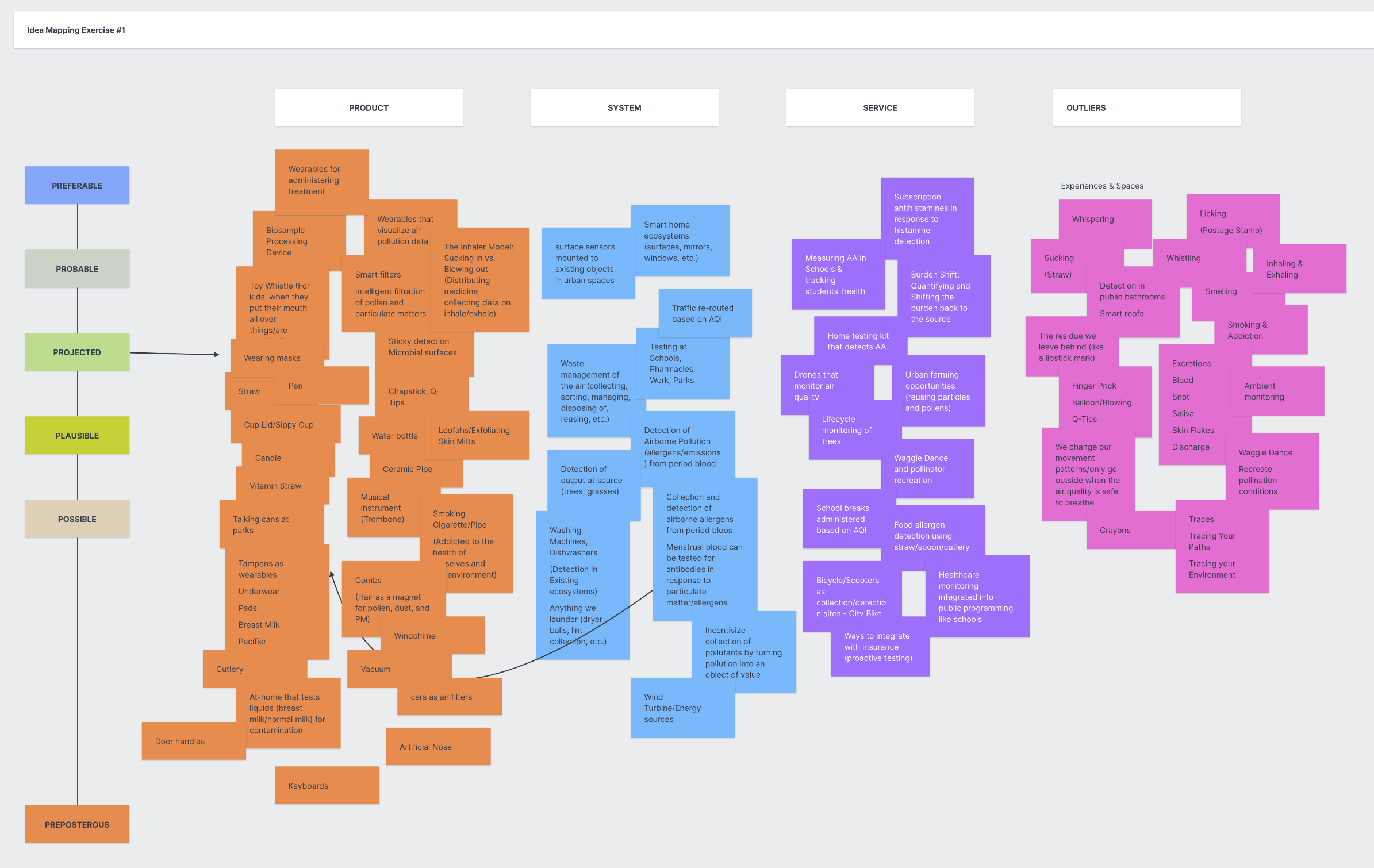
Idea Mapping #1
We then went ahead and took this ideation further and then clustered it into product system and service categories through a future cone lens. The futures cone is a brainstorming exercise for exploring the future. The exercise involves sorting ideas about the future by time, likelihood, and desirability.
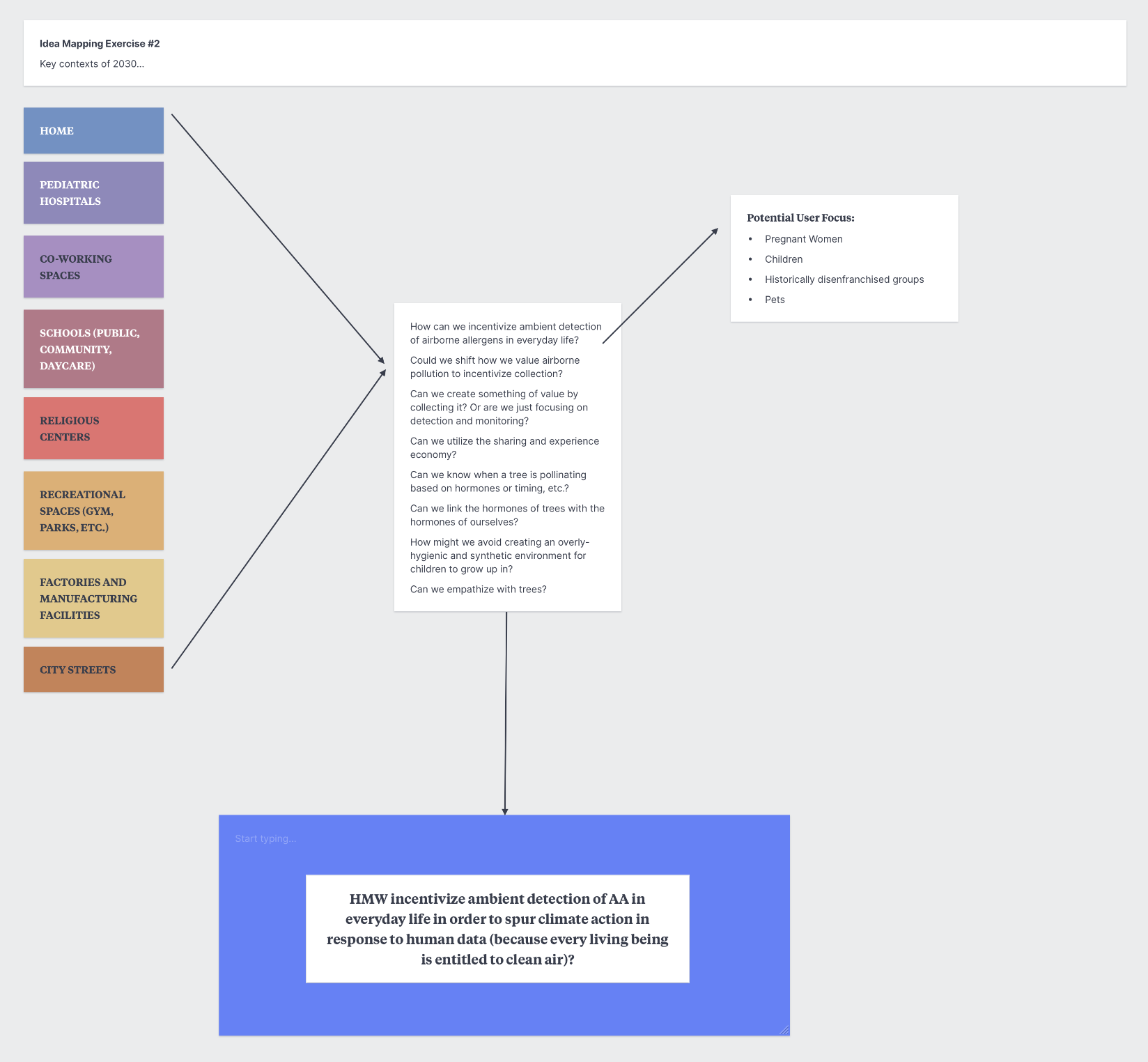
Idea Mapping #2
This phase allowed us to define our problem statement by identifying key contexts of 2030. We also looked at narrowing down our potential users. Ultimately, we are working towards incentivising ambient detection of Airborne Allergens in order to spur climate action in response to human data.
How might we create a healthy ambient atmosphere to protect future generations, given that increased particulate matter (PM) is impacting human and environmental health?
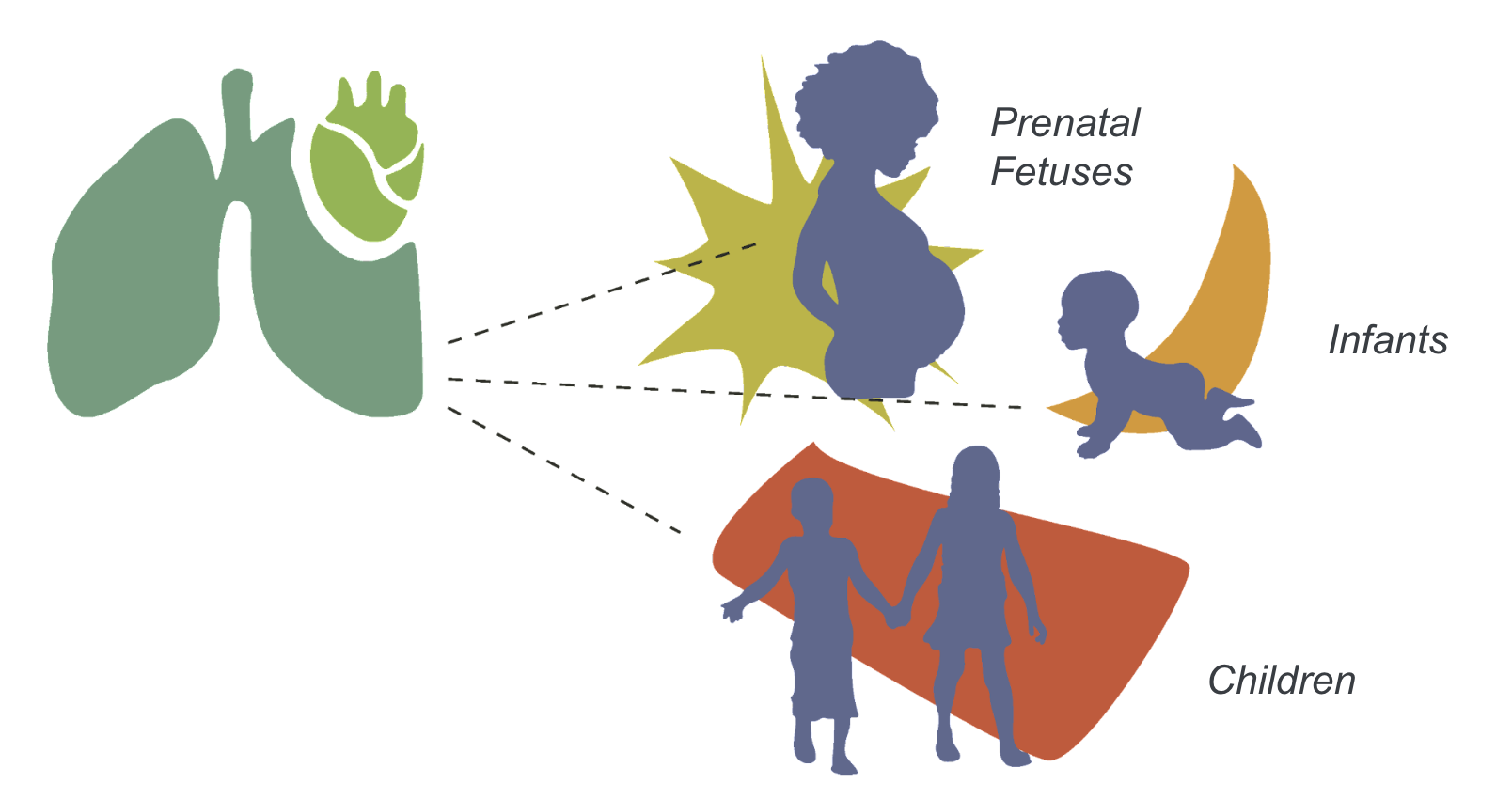
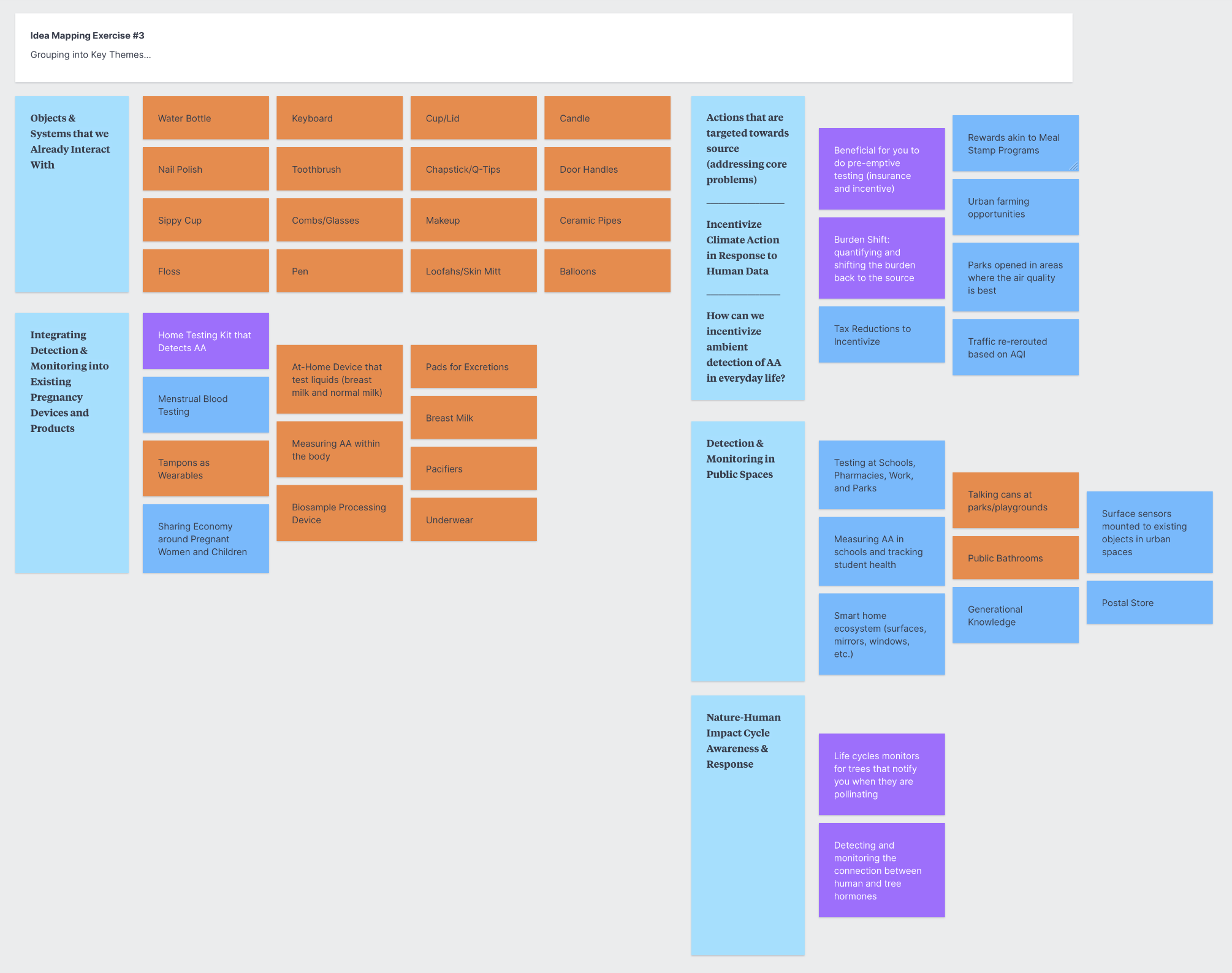
Idea Mapping #3
The goal of this exercise was to encourage creative and out-of-the-box thinking in identifying potential collection and detection points that we may not have previously considered. By examining our daily routine, we were able to identify areas where various types of samples or data could be collected, such as from surfaces we frequently touch or objects we frequently use.
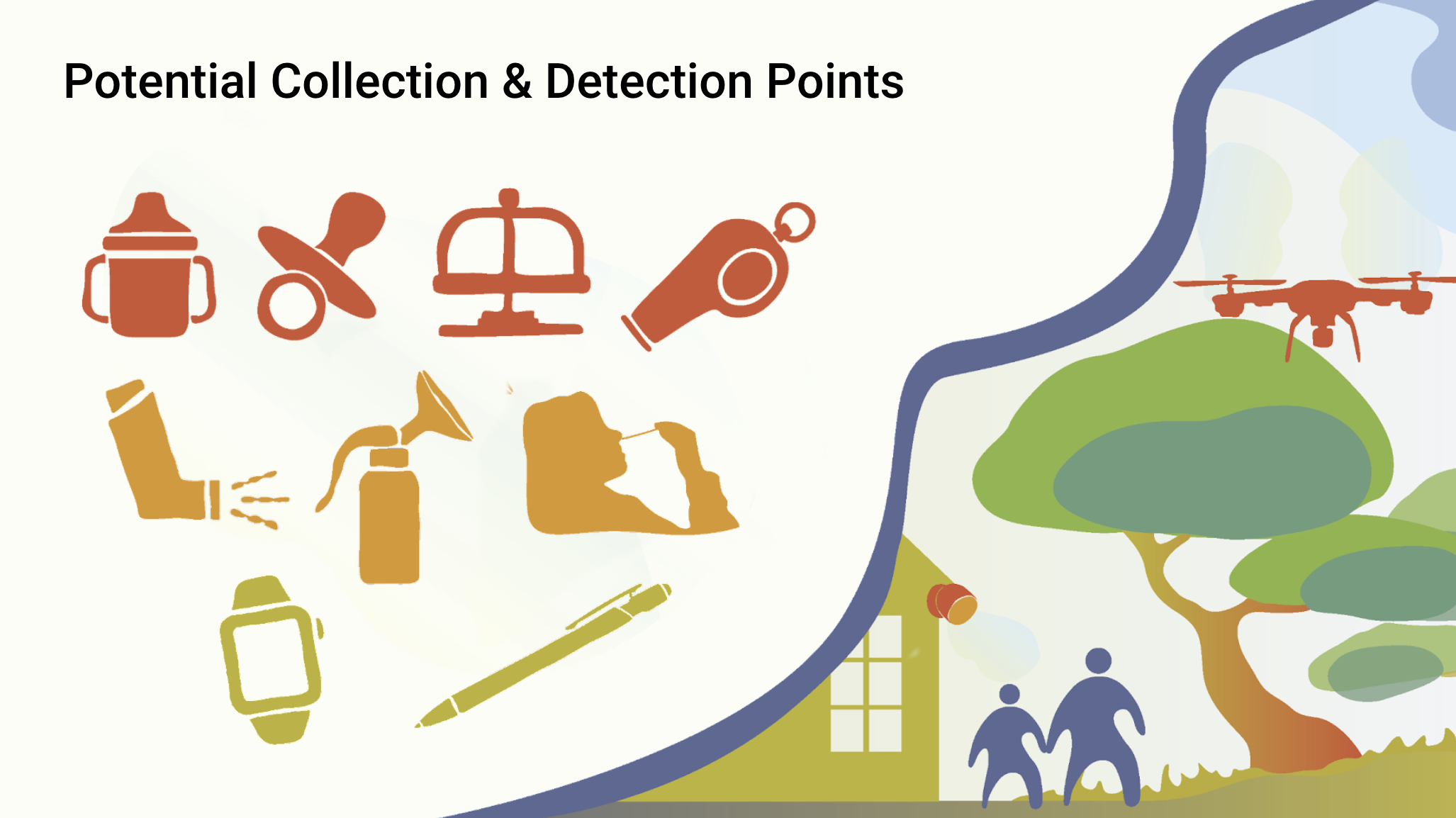


Recent Comments